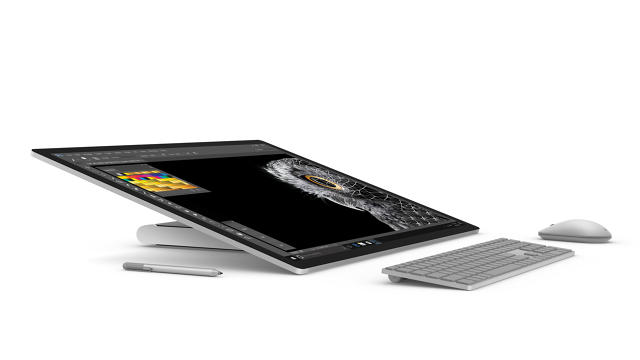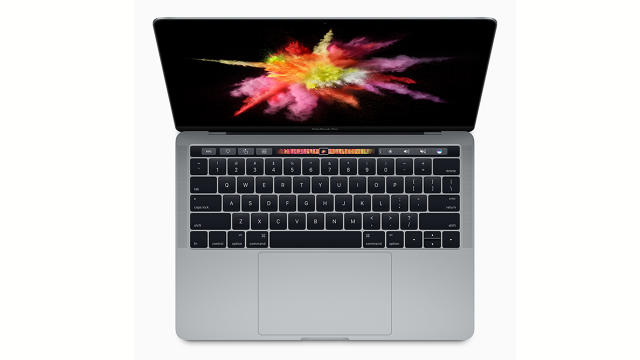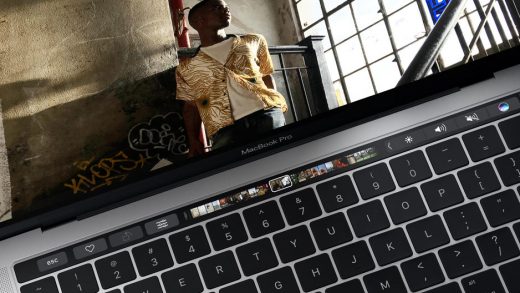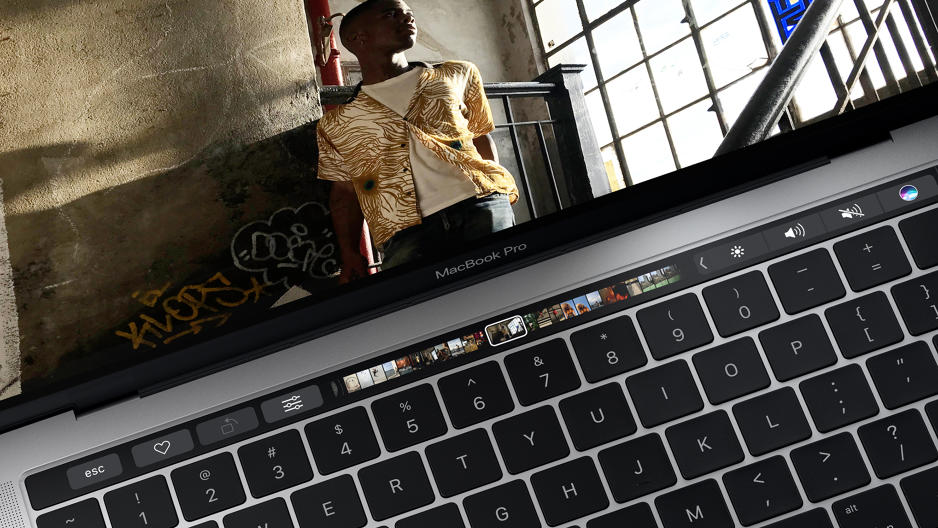How Apple’s New MacBook Pros Compare To Microsoft’s New Surface Studio
Like an old rivalry brought back to life, the two competitors faced off in the ring this week. Microsoft held a press event on Wednesday in New York City to announce its new Surface Studio desktop computer and a new input device called the Dial. About 24 hours later, Apple held a press event to announce new MacBook Pros featuring a new programmable Touch Bar to replace the function keys.
Comparing the two events, I’d say Microsoft won for pure innovation.
Microsoft announced a game-streaming service called Beam, some new communications features in Windows 10, a new VR headset reference design for Google’s Project Daydream platform, and a souped-up Surface Book. About an hour into the program, it was time for the main event, the new Studio desktop PC and the Surface Dial. The Studio was demoed in grand style by Microsoft hardware chief Panos Panay on the stage in New York. It was kind of exciting.
The Studio is targeted at designers, illustrators, and other creatives. The 28-inch touchscreen of the device lowers to a drawing-board position on the desktop. Microsoft’s Surface Pen is a big part of the way that users create on the Studio. And the new Dial rotary input method is supposed to play a supporting role for the Pen by calling up modes, or stroke thickness, or line colors, as the case may be. The Dial can be placed directly on the touch screen, and the OS and the app detect it and fashion menus around it.

These are things most people haven’t seen before on the desktop—new ideas designed to keep users completely engaged in creating.
Apple’s event was a business-as-usual affair. The big news—new MacBook Pros—had already been leaked, as typically happens with their products. The company launched a new accessibility website for the disabled, announced a TV Guide-like app for Apple TV called TV, and teased some new 5K displays it built with LG.
Apple’s new Touch Bar for MacBook Pro is innovative, but in a different way and in a different context than the Surface Studio. The Touch Bar is an OLED touch screen strip just above the keyboard where you’d expect the physical function keys to be. And depending on the app being used, the Touch Bar displays relevant shortcuts and content suggestions. So when the Safari browser is on the screen, the Touch Bar might display the user’s most commonly used bookmarks. When Messages is open, you’ll see emoji and word suggestions. And so on.
Apple also stresses that it is working to get third-party app developers to add Touch Bar support for their apps. For instance, Apple demonstrated Touch Bar shortcuts and other content for Photoshop users. We saw Touch Bar integration for Microsoft Office Suite products like Word and Excel.
The new MacBook Pros also offer significantly larger touch pads, thinner designs, faster processors, and individually lighted keys. In other words the MacBook Pros got all the normal component and design upgrades that any refresh of an existing line would get.

And that’s how Microsoft’s Surface Studio and Dial announcements are so different from the Apple news. Yes, you could say they are part of the “Surface” family, but they are also new kinds of tech products. The Studio is the first desktop computer Microsoft has ever made. The Dial is the first rotary input device offered as part of a major operating system.
The two products—the new MacBook Pros and the Surface Studio—will, at least at first, be judged by two very different communities of users after they become widely available.
Illustrators, designers, and architects will be the ones who make or break the Surface, who will assess whether or not it smooths their workflow and channels creativity.
The MacBook Pros, which will enter the marketplace faster than the Studio, will be used by the masses. After the holiday season, millions of them will be in use by lots of different kinds of people who do lots of different kinds of work. For some apps, the Touch Bar may end up being very useful and time saving. For instance, I use GarageBand for audio production, and shortcuts are essential (and hard to remember!). Photoshop—same thing. But, in general, it’s impossible to know how the Touch Bar will fit into peoples’ normal everyday computing workflow. It could end up being yet another thing that looked sexy in the demo, but wasn’t that useful in real life.
The Surface Studio and the Touch Bar are different in another way too. The Dial gives a physical, tactile interface to functions that would normally be done on a touchscreen. It makes certain digital functions easier by making them feel analog. The Touch Bar goes the other way. It puts a digital touch screen interface in a place where a line of physical, tactile, analog function keys used to be.
The two products also fit into very different price ranges. The Surface Studio starts at $3,000 and ranges up to $4,200 for a fully loaded version. The MacBook Pro starts at $1,800 and ranges up to $2,400.
So the star of Microsoft’s press event, the Studio (with the Dial in a supporting role) is a sexier product than the star of Apple’s show on Thursday, the new MacBook Pro with Touch Bar. But that’s probably okay with Apple, which just may prefer to have fatter sales numbers than a highly innovative, category-breaking product.
The history of Apple in under 3 minutes
Fast Company , Read Full Story
(25)



